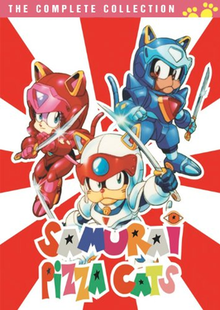
Speed Racer, also known as Mach GoGoGo, is a Japanese manga about automobile racing created by Tatsuo Yoshida. It was originally serialized in print in Shueisha's 1966 Shōnen Book. It was released in tankōbon book form by Sun Wide Comics and later re-released in Japan by Fusosha. Adapted into anime by Tatsunoko Productions, its 52 episodes aired on Fuji TV from April 1967 to March 1968. In the US, the show aired in syndication at approximately the same time. The anime was later re-broadcast on Tokyo MX from July 1 to September 25, 2008.
The history of anime in the United States began in 1961, when Magic Boy and The White Snake Enchantress, both produced by Toei Animation, became the first and second anime films to receive documented releases in the country. Anime has since found success with a growing audience in the region, with Astro Boy often being noted as the first anime to receive widespread syndication, especially in the United States. Additionally, anime's growth in popularity in the US during the 1990s, commonly referred to as the "anime boom," is credited with much of anime's enduring relevance to popular culture outside Japan.
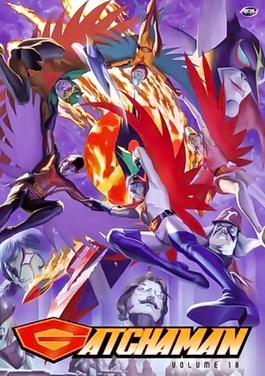
Science Ninja Team Gatchaman is a Japanese animated franchise about a five-member superhero ninja team created by Tatsuo Yoshida and produced by Tatsunoko Productions. The original anime series, which debuted in 1972, was eponymously entitled Kagaku Ninja-tai Gatchaman and is best known in the English-speaking world as the adaptation entitled Battle of the Planets (1978). The series had additional English adaptations with G-Force: Guardians of Space (1986) and 2005 ADV Films uncut release. Tatsunoko also uses the official translation Science Commando Gatchaman in related products and media.

Kyatto Ninden Teyandee is a Japanese anime series produced by Tatsunoko Productions and Sotsu Agency. The series originally aired in Japan on TV Tokyo from February 1, 1990, to February 12, 1991, for a total of 54 episodes. Saban picked up the North American rights to the series in 1991, and produced an English version called Samurai Pizza Cats. The creators stated that there was going to be a spin-off series, Kyatto Keisatsu Beranmee. The series is known for its cultural humor consisting of Japanese puns, pop culture, and fourth-wall breaking.

Digimon Adventure, also known as Digimon: Digital Monsters Season 1 in English-speaking territories, is a 1999 Japanese anime television series produced by Toei Animation in cooperation with WiZ, Bandai and Fuji Television. It is the first anime series in the Digimon media franchise, based on the Digital Monster virtual pet released in 1997.

Tekkaman Blade is a 1992 Japanese anime television series produced by Tatsunoko Production and Sotsu Agency. The series was directed by Hiroshi Negishi and written by Mayori Sekijima and Satoru Akahori. The story follows an organization called the Space Knights and their war against aliens known as the Radam. The Space Knights are assisted by Takaya Aiba, who has the ability to transform into an armored warrior known as Tekkaman Blade.

Ronin Warriors, known in Japan by its original title Legendary Armor Samurai Troopers, is a Japanese anime series created by Hajime Yatate and animated by Sunrise. The television series, co-produced by Nagoya TV, aired across Japan on the All-Nippon News Network from April 30, 1988, to March 4, 1989 for a total of 39 episodes. A manga adaptation was serialized on Kodansha’s Comic BomBom from November 17, 1988 to April 5, 1990 and the chapters collected into 2 tankōbon volumes.
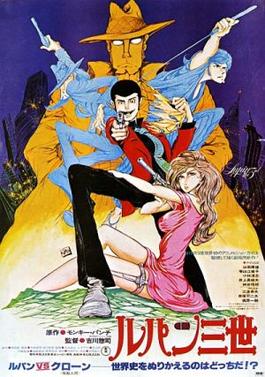
Lupin III: The Mystery of Mamo, also known as Lupin III: The Secret of Mamo, is a 1978 Japanese animated science fiction action adventure comedy film. It is the first animated feature film based on the 1967–69 manga series Lupin III by Monkey Punch. The film was originally released in Japan as Lupin III, but was later retitled to Lupin III: Lupin vs. the Clone. Directed by Sōji Yoshikawa, who co-wrote the screenplay with Atsushi Yamatoya, the film was produced by animation studio Tokyo Movie Shinsha and distributed by Toho. The film's plot follows master thief Lupin III, who attempts to foil Mamo ― a wealthy and powerful recluse seeking immortality ― while trying to win the affections of his rival and would-be lover, Fujiko Mine.
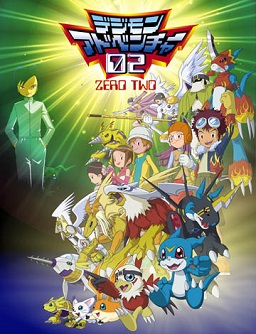
Digimon Adventure 02, marketed as season 2 of Digimon: Digital Monsters in English-speaking territories, is a Japanese anime television series produced by Toei Animation. It is the sequel to Digimon Adventure, and the second anime series in the Digimon franchise. The series aired in Japan from April 2000 to March 2001. It was originally licensed in North America by Saban Entertainment and aired in the US from August 2000 to May 2001.

The Adventures of the Little Prince is an anime series based on the book by Antoine de Saint-Exupéry. Made by the animation studio Knack Productions, the series, originally titled The Prince of the Stars: Le Petit Prince, aired in Japan on the TV Asahi network from July 1978 to March 1979. Dubbed into English, the series premiered in the United States in 1985 on Nickelodeon and was rerun through June 1, 1985 to December 29, 1989. It was also broadcast on TVOntario throughout the 1980s beginning in 1985, a station that would later pick up the dub of the 2010 French adaptation. Yoshikazu Yasuhiko, of Mobile Suit Gundam fame, was involved in this series as a director.
Satoru Akahori is a Japanese scriptwriter, novelist and manga author. He is best known for the Saber Marionette, Sakura Wars and Sorcerer Hunters series, which comes in anime, novel and manga forms.

Star of the Giants is a Japanese sports manga series written by Ikki Kajiwara and illustrated by Noboru Kawasaki. It was serialized in Kodansha's Weekly Shōnen Magazine from 1966 to 1971. It is about the actual baseball team Yomiuri Giants using fictional characters. It was launched by the "Yomiuri Group" which at the time owned not only the actual baseball team, but the TV network Nippon Television, the newspaper Yomiuri Shimbun, as well as Yomiuri Telecasting Corporation. It was adapted into an anime television series broadcast in Japan in 1968. It later spawned two anime sequels and different anime movies.

Lupin the 3rd Part II is a Japanese anime television series produced by Tokyo Movie Shinsha. Part of the Lupin III franchise, it is the second anime television adaptation of the Lupin III manga series created by Monkey Punch. Although originally broadcast as simply Lupin III, the series is now often referred to as New Lupin III by Japanese fans. Among English-speaking fans, the series is commonly known as the "Red Jacket" series in reference to Lupin's outfit.

The Genie Family is a Japanese anime television series produced by Tatsunoko Productions. It aired from October 5. 1969 to September 27, 1970, with a total of 52 episodes on Fuji TV. It tells the story of a boy who finds a bottle with a mysterious power - each time its user sneezes or yawns, a genie will come up and must grant the user's wish. A 1992 Saban Entertainment English dub called Bob In A Bottle was shown internationally, with a sequel series airing on YTV in Japan in 2020.

Night Warriors: Darkstalkers' Revenge, originally titled Vampire Hunter: The Animated Series in Japan, is a four-episode original video animation (OVA) series by Madhouse Studios under license from Capcom, directed by Masashi Ikeda, originally released in 1997–1998. It is an adaptation of Capcom's Darkstalkers video game series.
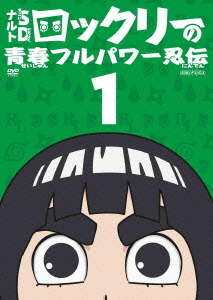
Rock Lee & His Ninja Pals is the anime adaptation of the Naruto spin-off manga created by Kenji Taira, Rock Lee no Seishun Full-Power Ninden. It was announced in February 2012 by Shueisha. Produced by Studio Pierrot and directed by Masahiko Murata, the series premiered on TV Tokyo on April 3, 2012. Crunchyroll simulcasted the series premiere online and has each episode available for streaming.

Lupin the 3rd Part I is a Japanese anime television series produced by Tokyo Movie. Part of the Lupin III franchise, it is the first anime television adaptation of the Lupin III manga series created by Monkey Punch. The series was originally broadcast as simply Lupin III on Yomiuri TV between October 24, 1971 and March 26, 1972. Among English-speaking fans, this series was commonly known as the "Green Jacket" series in reference to Lupin's outfit, but more recently it is now known as "the first Green Jacket" series because of the outfit's return in Part 6.
